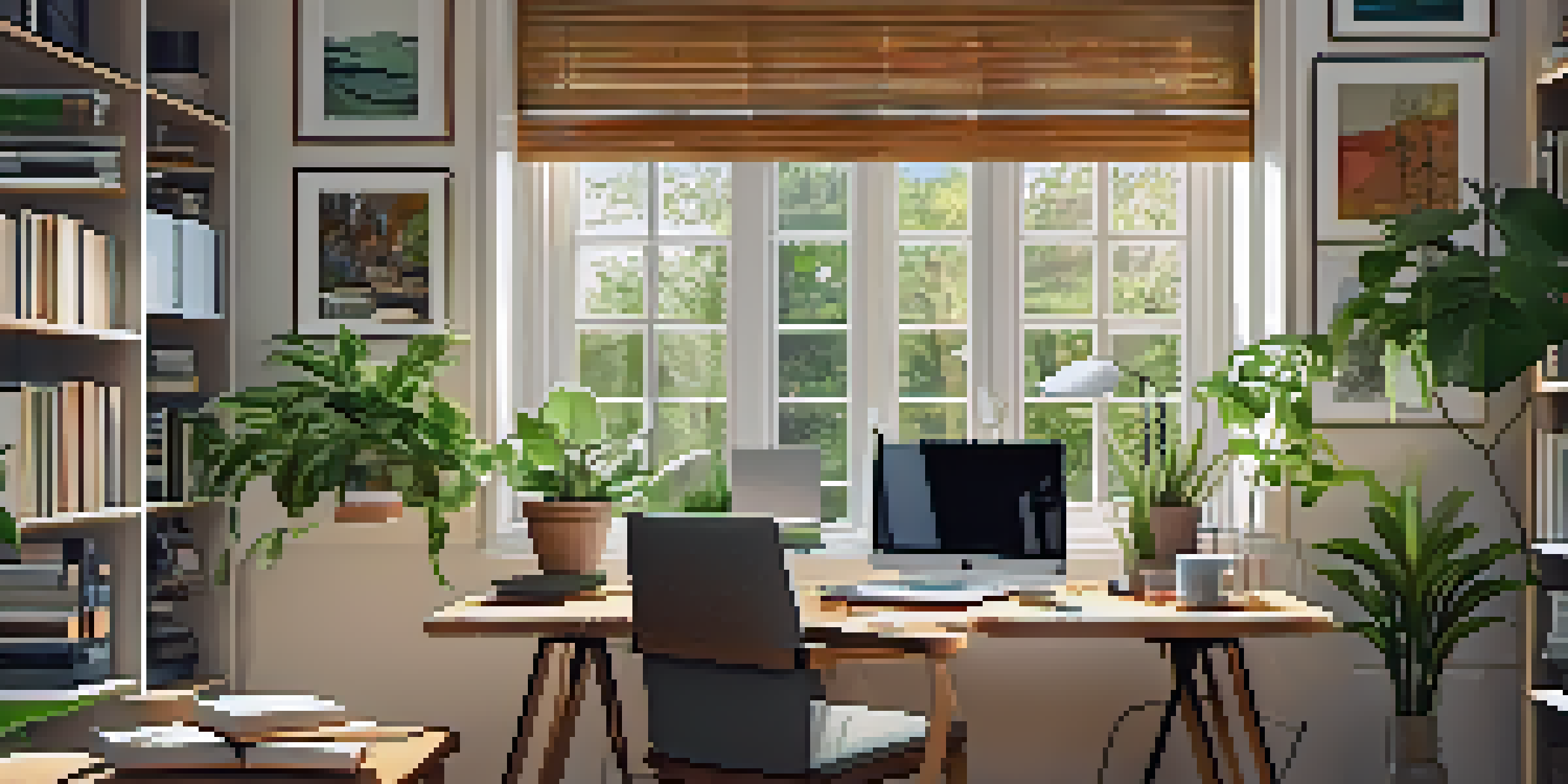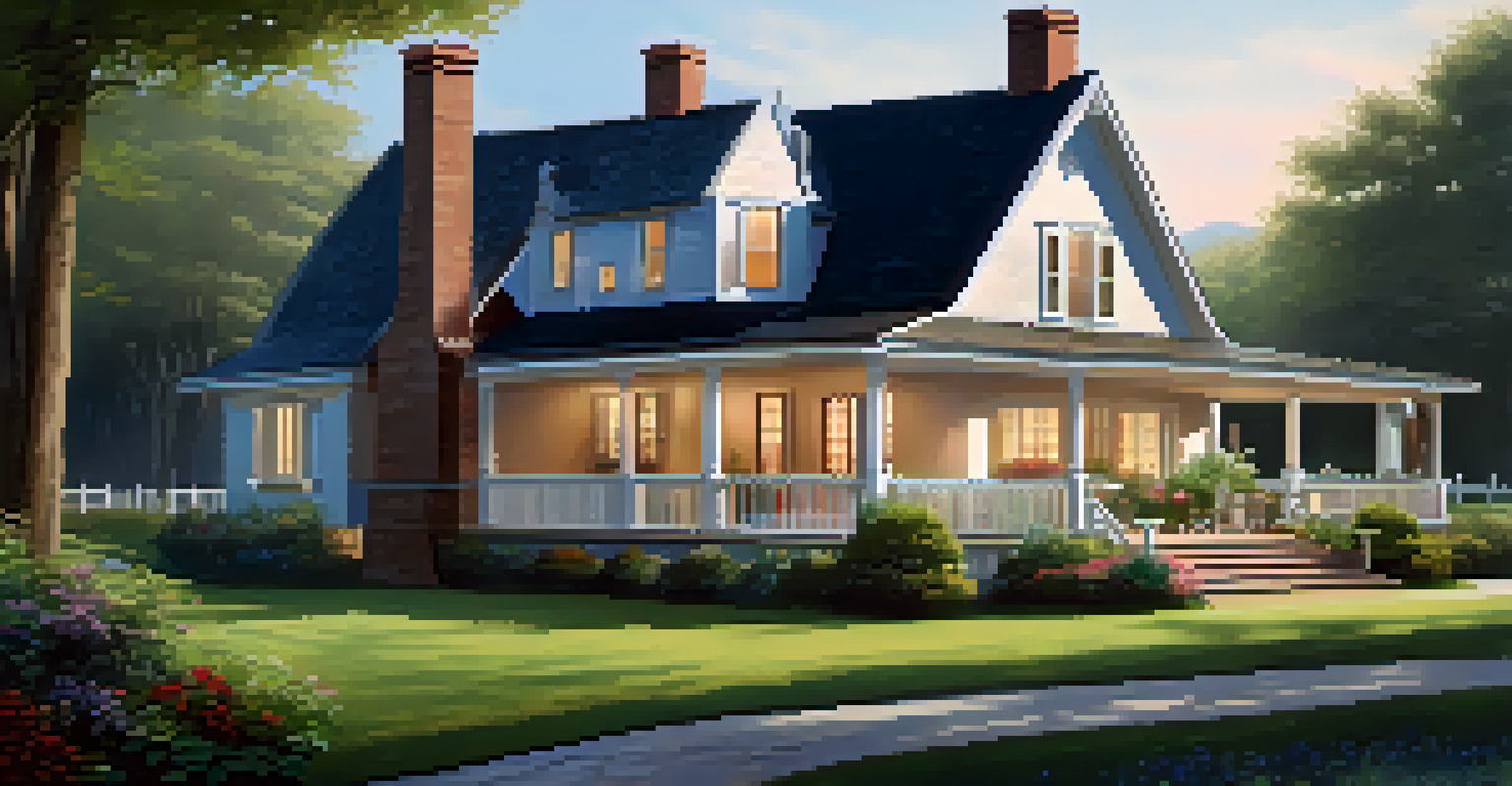How Remote Work is Shaping Modern Housing Preferences Today

The Rise of Remote Work and Its Impact on Living Spaces
As remote work becomes the norm, many people are reevaluating their living spaces. No longer tied to a daily commute, individuals are seeking homes that cater to their new lifestyle. Spacious interiors and dedicated office areas are now top priorities for homebuyers and renters alike.
The future of work is not about where you are, but how you work.
This shift has led to a growing demand for properties that offer amenities conducive to productivity. Features such as soundproof rooms, high-speed internet access, and ergonomic workspaces are increasingly sought after. Essentially, homes are evolving from mere shelters to multifunctional spaces that support both work and leisure.
Moreover, the geographical restrictions of work have loosened, allowing individuals to consider living in areas they once thought impractical. Whether it’s a quiet suburb or a scenic rural location, people are choosing environments that enhance their quality of life while still enabling them to work efficiently.
Location Preferences: Urban vs. Rural Living
Remote work is reshaping where people want to live, with many opting for rural areas over bustling cities. The appeal of wide-open spaces, fresh air, and a lower cost of living is increasingly attractive to those who can work from anywhere. As a result, there’s been a noticeable migration from urban centers to more serene, spacious locales.

This trend is not just about escaping the city; it’s also about finding a community that aligns with personal values. Many remote workers are looking for neighborhoods that offer a sense of community, access to nature, and opportunities for outdoor activities. This shift is prompting developers to rethink how they design and market homes in these emerging areas.
Interestingly, some urban dwellers are still committed to city life but are seeking homes that provide an escape from the hustle and bustle. Features like rooftop gardens, community parks, and nearby nature trails are becoming essential for those who want the best of both worlds—a vibrant urban lifestyle with easy access to nature.
Designing Homes for Remote Work: Key Features to Consider
As remote work takes center stage, home design is evolving to support this shift. Homeowners are increasingly prioritizing functional layouts that include dedicated office spaces. This trend often translates to the creation of spare rooms or the conversion of basements and attics into productive work environments.
Home is not a place, it's a feeling.
Natural light is another key consideration in home design for remote workers. Studies show that exposure to natural light boosts productivity and mood. Consequently, homes with large windows, open floor plans, and access to outdoor spaces are highly sought after, creating an inviting atmosphere that fosters creativity and focus.
Additionally, sound insulation has become a critical feature for those working from home. As distractions can easily derail productivity, homes equipped with soundproofing materials help create a peaceful work environment. This emphasis on design not only enhances work performance but also improves overall well-being.
The Role of Technology in Modern Housing Preferences
Technology plays a vital role in shaping housing preferences for remote workers. High-speed internet is now a non-negotiable requirement for many homebuyers, as it enables seamless connectivity for virtual meetings and collaborative work. Without reliable internet, remote work can quickly become a frustrating experience.
Smart home technologies are also gaining traction, allowing for greater convenience and efficiency. Features like smart thermostats, lighting, and security systems can be controlled remotely, making it easier for individuals to manage their homes while balancing work responsibilities. This integration of technology into daily life is becoming increasingly important in the modern housing market.
Furthermore, the rise of home automation has sparked interest in energy-efficient homes. Many remote workers are looking for properties that not only support their work but also align with their values, such as sustainability. As a result, eco-friendly homes equipped with solar panels and energy-efficient appliances are becoming more attractive to buyers.
Community and Connectivity: The New Housing Priorities
With remote work blurring the lines between personal and professional life, community connectivity is now a major concern for many. People are looking for neighborhoods that foster social interaction and engagement, even when working from home. Local parks, community centers, and shared workspaces are becoming essential features in modern housing developments.
Moreover, the importance of mental well-being has sparked a desire for homes that promote a balanced lifestyle. Residents want access to recreational facilities, wellness programs, and social activities that encourage a sense of belonging. This shift is prompting developers to include communal spaces that facilitate gatherings and interactions among neighbors.
In essence, remote work has shifted the focus from individual living to community-oriented housing. The modern homebuyer is increasingly considering how their living environment impacts their social life, leading to a demand for developments that prioritize community connectivity alongside individual comforts.
The Future of Housing: Trends to Watch
Looking ahead, the trends in housing preferences driven by remote work are likely to continue evolving. As more companies adopt flexible work policies, we can expect to see an ongoing demand for homes that accommodate this lifestyle. This trend may lead to the development of new housing models that prioritize adaptability and multifunctionality.
Additionally, the integration of technology in homes is set to advance further. Innovations such as virtual reality home tours and AI-driven home management systems will likely become standard offerings. These advancements will not only enhance the home-buying experience but also improve the everyday lives of remote workers.
Finally, as the conversation around work-life balance continues, sustainable and eco-friendly housing options will likely gain more traction. Homebuyers may increasingly prioritize energy-efficient homes that reduce their environmental impact, underscoring the importance of aligning personal values with housing choices.
Conclusion: Embracing Change in Housing Preferences
In conclusion, remote work is undeniably reshaping modern housing preferences. The shift from traditional office settings to home offices has influenced the features and designs that people now prioritize in their living spaces. As we adapt to this new reality, the importance of flexibility, technology, and community will only grow.
Moreover, understanding these preferences can help both buyers and sellers navigate the evolving real estate landscape. For buyers, knowing what features are in demand can inform their choices, while sellers can adjust their offerings to meet these needs. This mutual understanding will foster a more harmonious housing market.

Ultimately, the transition to remote work is more than just a trend; it's a fundamental change in how we live and work. By embracing these shifts, we can create homes that not only serve as a place to work but also enhance our overall well-being and quality of life.